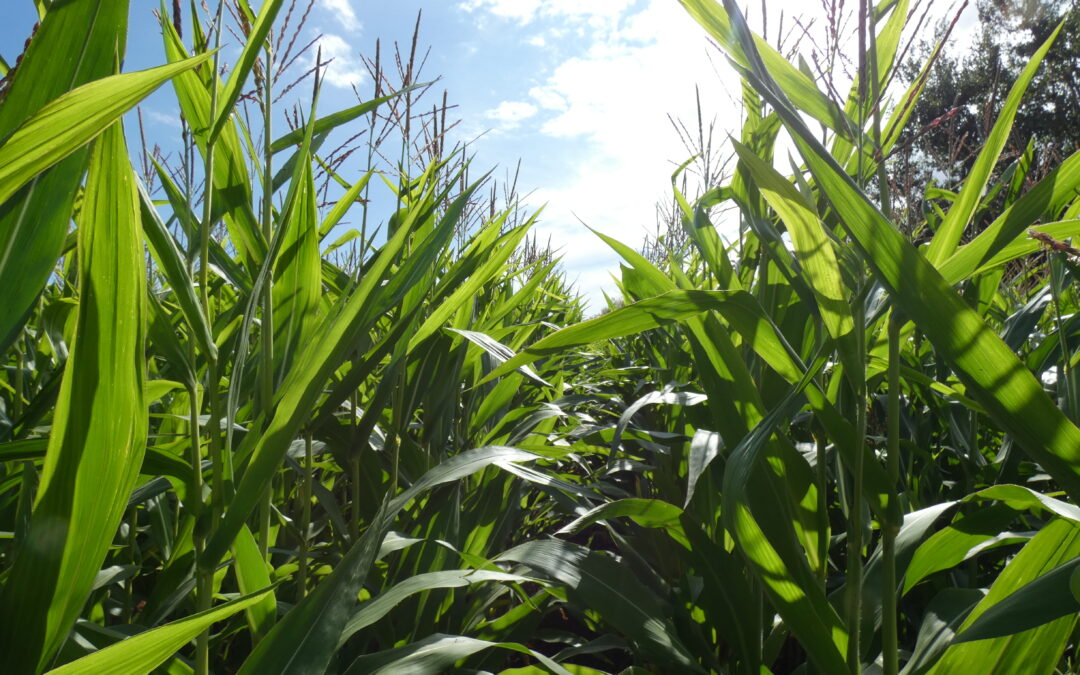Bright Maize business manager, Charlie Dolphin, looks at this year’s maize campaign and highlights a couple of new varieties that appear among the 20 plus offerings available to growers in 2024
With a third of this year’s forage maize seed already bought, the bulk of sales will take place over the next two months. As always, providing it is available, some growers are sticking with the varieties they know, content that they perform well on their farm; while others reach out for newer or first-time offerings.
As a rule, for medium to larger growers, where the area is over 50 acres, it is prudent to grow at least two varieties, perhaps one taking the lion’s share and the other on probation for a more prominent role in future years.
Maize breeding never stands still
This year, as is inevitable, one or two of the old favourites have dropped away to be replaced by new varieties shown to outperform them in one or more of the key areas: this might be yield, feed value or disease resistance. Whatever the scenario, maize breeding never stands still and must be responsive to ever-changing demands, whether climatical, economic or political.
That growers have moved away from yield as the overriding influence in variety selection is old news; but any notion that yield is no longer a strong influencer is misguided: yield will always be an important factor in any maize breeding programme. But, as we all know, other highly relevant factors must be taken into account – and in addition to the familiar ones such as maturity, another game-changer is now at play: drought. The UK has become susceptible to drought every two or three years.

Drought-resistance: a key plank of UK breeding
However demanding maize – as a subtropical crop – might be for sunshine, a drought, particularly ill-timed, can adversely impact yield by as much as half and typically by a quarter. It should come as no surprise therefore that our partner company, MAS Seeds, has prioritised drought-resistance as a key plank of its UK breeding programme – the fruits of which are evident in Bright Maize’s current portfolio of products, and this will only become more so as the breeding programmes progress.
The Bright Maize range this year carries a full complement of varieties, strengthened by countrywide trials that, crucially, assess performance on a regional basis rather than a one-size-fits-all national basis.
STARLORD and MAS 75B
Two forage maize varieties that are welcomed to the fold for 2024 are STARLORD (FAO 190) and MAS 75B (FAO 190).
STARLORD is an early maturity, above average yielding maize with excellent forage characteristics. Its high starch content coupled with high scoring drought resistance and lodging makes it an ideal variety for dairy cows, placing it in pole position to become a first-choice selection for the UK dairy sector. This is its first season, so early orders to secure supply will be required; but higher stock levels are scheduled for next year.
MAS 75B is an early maturity, high yielding maize with exceptional stay-green characteristics. A good performer in all soil conditions, an outstanding feature is its high level of whole plant digestibility arising from well above average starch content. The breeding programme of this variety provides genetics to protect the integrity of the plant at harvest to give better conservation within the clamp.
GREEN+ hybrids to get a head start in the fermentation process
Breeding maize varieties that maintain feed value during conservation in the clamp is a key theme of the Bright Maize range. If harvested maize is presented to the clamp with characteristics desirable for fermentation, it makes for higher feed value forage at feeding. Accordingly, MAS Seeds GREEN+ hybrids show a greater level of soluble sugars at harvest, as well as a higher proportion of green parts which consume more oxygen in the silo. This enables GREEN+ hybrids to get a head start in the fermentation process and a faster pH drop in the clamp, reducing losses and any adverse impact on the bacteria required for good fermentation.
To this end, such varieties are bred with the genetic ability to delay the maturity of leaves and stems, allowing a longer period of photosynthesis. In short, it permits the plant to stay green for longer, improving the response to stress.

Supplying AD plants with a green mass of material is not feasible or sustainable
Through its work with MAS Seeds, Bright Maize is also leading the field in presenting maize varieties destined for anaerobic digestion (AD). Moving forward, simply supplying AD plants with a green mass of material is not a feasible or sustainable option. An AD plant, like a dairy cow, has a specific set of requirements – and whilst there is a significant crossover – the demands of AD do differ, particularly in relation to the rates of digestibility. Only by recognising the needs of the individual sectors can maize reach its potential, whether it be energy for milk production or powering the grid.
More research and development than at any other time
I am confident that the range of maize varieties offered by Bright Maize to UK growers in 2024 provides the solutions sought by growers, and the markets they serve. Growing maize in this country is currently subject to more research and development than at any other time: this is vindicative of the crop’s excellent long-term prospects in the UK. Maize is an attractive and efficient energy source; correct variety selection and husbandry will ensure its viability and continued popularity.
In the second part of this blog, Charlie Dolphin looks at the size of the UK maize market in relation to Europe; its prospects for growth; and the investment needed to develop new varieties…

